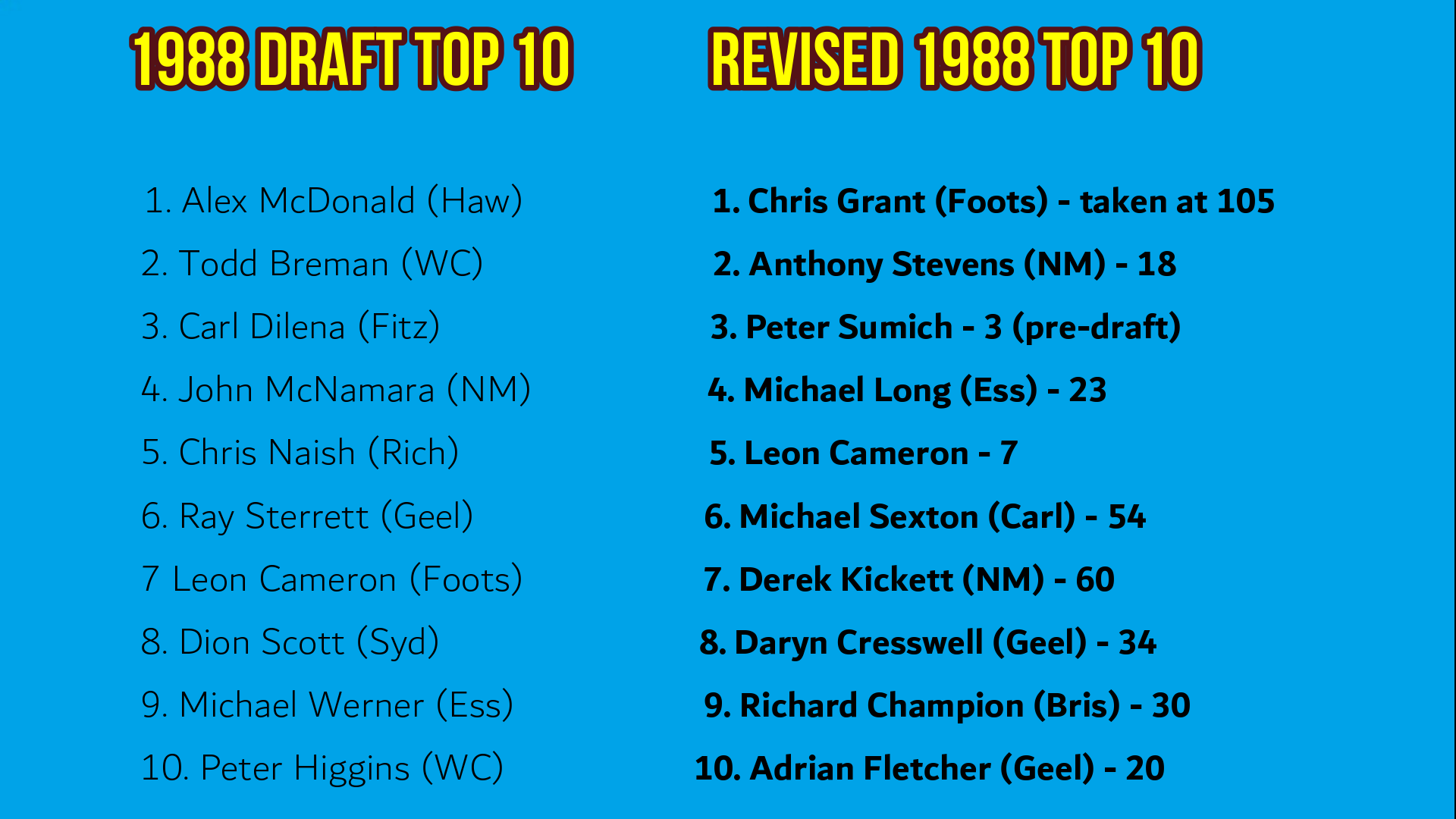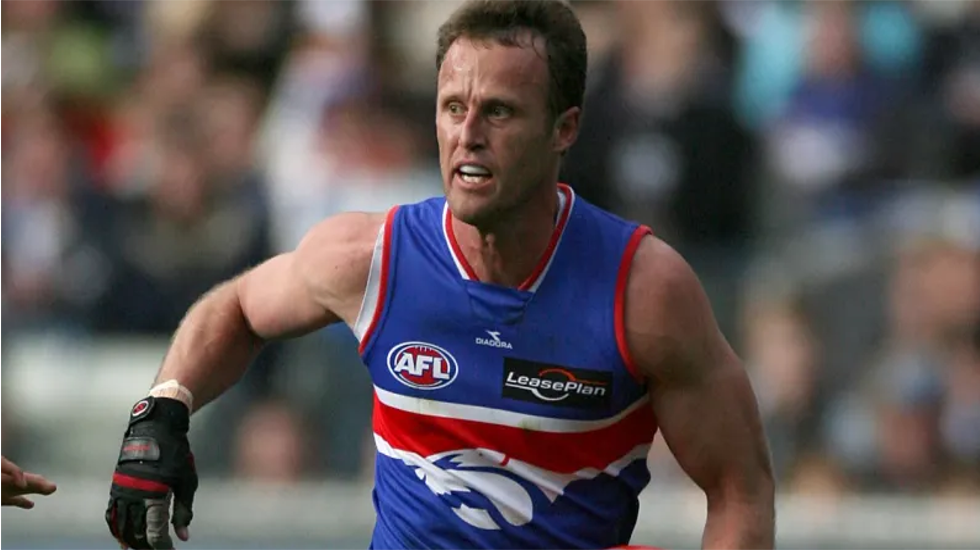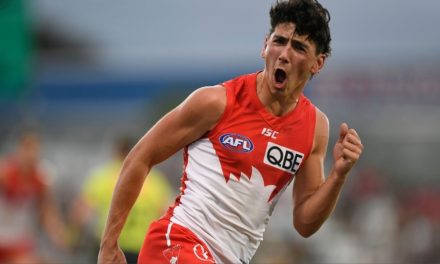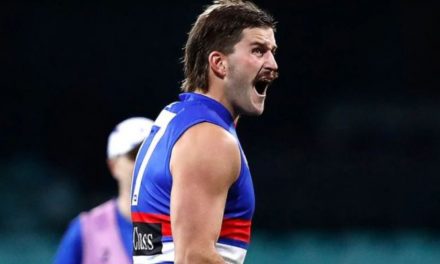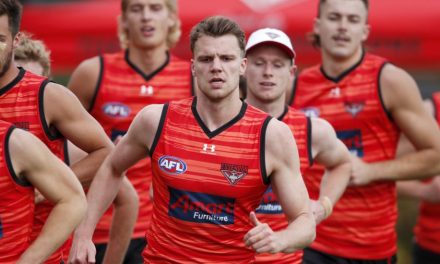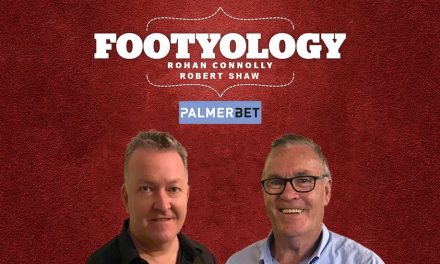Footscray/Western Bulldogs champion Chris Grant was taken, incredibly, at a lowly No.105 in the 1988 VFL draft.
In this instalment of Footyology’s “Redraft” series, we take a look at one of the biggest draft bargains of all time.
Perhaps in a sign of how inexact the “science” of drafting was in the early days, in 1988 Bulldogs legend Chris Grant slipped all the way down to pick No.105.
It’s almost inconceivable that such an incredible player could be taken so late, but as we’ve seen time and time again, it happens, and Grant jumps 104 spots to claim pole position in the revised order.
One of the best key position players to ever pull on a boot, Grant was just as comfortable up forward as he was down back, providing enormous flexibility for whoever was coaching him.
With 554 goals from 341 games, Grant is just one of 27 players in the history of the VFL/AFL to play at least 300 games and kick at least 400 goals. He also sits second on the Bulldogs’ all-time games list behind his teammate of 14 years Brad Johnson (364).
A magnificent mark, a beautiful shot for goal and an incredibly strong player, Grant was a force to be reckoned with for over a decade.
He was cruelly denied a Brownlow Medal in 1997 when he finished with the most votes but a contentious one-game suspension for striking Hawthorn’s Nick Holland rendered him ineligible, handing the coveted award to St Kilda superstar Robert Harvey instead.
Despite that, Grant, who captained the Bulldogs for five seasons, finished up with three All-Australians, two best-and-fairests and induction into the Australian Football Hall of Fame.
One of the most memorable moments of his career was when he kicked the match-winning goal from the impossible angle to end Essendon’s 20-match winning streak in 2000, in what would be the Bombers’ one and only loss for the season.
North Melbourne champion Anthony Stevens jumps 16 spots from 18 to two after a decorated career with the Kangaroos.
One of the toughest midfielders of the modern era, Stevens famously played in the 1999 grand final with a fractured heel and all the ligaments torn in his ankle. He also courageously fought back from a life-threatening incident in early 2000 which saw a pane of glass fall from an elevated position above a pub and smash on his face/neck, causing a significant gash and requiring surgery.
A natural ball winner, the uncompromising Stevens was an inspiration for his teammates and truly embodied the “Shinboner Spirit”. He ended up captaining his beloved Kangaroos for a couple of seasons too.
He retired in 2004 after 292 games and in 16 seasons collected two premierships, an All-Australian jumper and a pair of best-and-fairests. He was also inducted into the Australian Football Hall of Fame and was named in North Melbourne’s team of the century.
PLEASE HELP US CONTINUE TO THRIVE BY BECOMING AN OFFICIAL FOOTYOLOGY PATRON. JUST CLICK THIS LINK.
West Coast sharpshooter Peter Sumich comes in at No.3, but rival clubs can’t be blamed for not selecting him as he was a pre-draft selection for the Eagles.
One of the most underrated forwards of the 1990s, Sumich’s feats did get overshadowed to a degree by contemporaries such as Tony Lockett, Gary Ablett, Jason Dunstall, Tony Modra and Stephen Kernahan.
But he was a brilliant footballer and a smart forward as well. A two-time premiership player, Sumich was also a seven-time leading goalkicker for the Eagles, who was more than capable of kicking bags of goals, with hauls of 13 and 11 to his credit as well as five bags of eight. Up until 2018, he held the club record for goals (514) before Josh Kennedy topped him.
In fourth spot is the brilliant Michael Long who was originally taken at 23. The word “magical” tends to get thrown around a lot, but that word is extremely appropriate when describing the Essendon champion.
Long was doing clever Cyril Rioli-like tap-ons into space when Cyril was still in nappies. Capable of the extraordinary on the footy field, Long would not only become one of the Bombers’ favourite sons but prove one of the keys in kick-starting the influx of Indigenous players into the VFL/AFL over the past 30 years, a trend which has enriched the game so much.
With lightning quick reflexes, incredible football IQ, superb skills and pace to burn, Long was one of the most electrifying players of his time. He finished up with two premierships, two All-Australian jumpers and of course a Norm Smith Medal for arguably his greatest performance, in the 1993 grand final. His incredible running goal in the first quarter of that game is forever etched into September folklore.
The silky-smooth Leon Cameron comes in at No.5 after originally being taken at seven by the Bulldogs. One of the classiest midfielders of the 1990s, Cameron finished his career at Richmond and ended up with 256 games to his credit. He’s the only player to retain his spot in the top 10.
Cameron was a beautiful user of the footy and always seemed to have a lot of time to make decisions. However, he could never quite make it to a grand final, playing in three losing preliminary finals including the Bulldogs’ heartbreaking 1997 collapse against Adelaide.
Carlton defender Michael Sexton and the sublime Derek Kickett both get big upgrades from 54 to six and 60 to seven respectively, while Sydney tough nut Daryn Cresswell comes in at No.8 after being originally picked up by Geelong at 34.
Brisbane backman Richard Champion jumps 21 spots from 30 to nine, while four-club journeyman Adrian Fletcher moves up from 20 to 10.
Apologies go out to Don Pyke, Scott Russell, Chris Naish and Brad Sholl, while Tony Francis also proved to be a huge bargain, as he was picked up by Collingwood with selection No.95.
*Redrafts only consider the first time a player was drafted.
